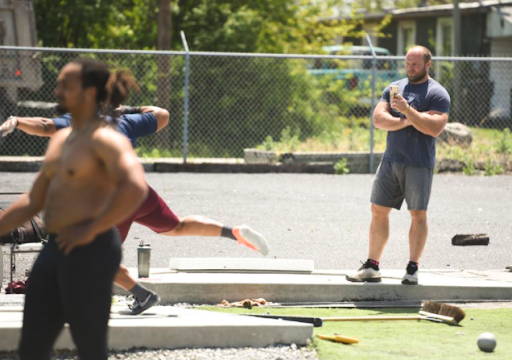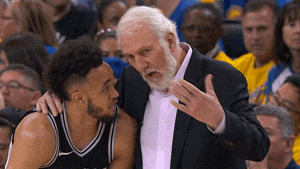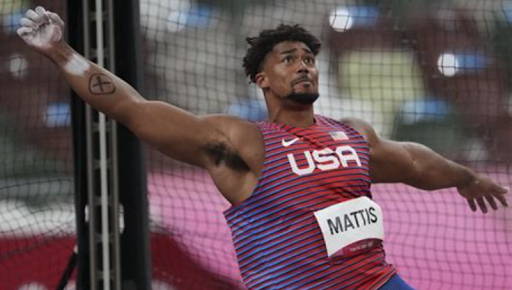Peak Performance: How Do Athletes Get THERE?!
Oftentimes, as coaches and athletes, we do a lot in preparation for competition. We will have everything in line and think we have the greatest plan ever designed. We are training very well and we head off to a huge competition. Competition day comes and things just go horrendous. No tension, feel flat, super stressed, compete poorly, and it all just ruins training.

We sit there and go, “I thought we had the best scheme ever? I was going to peak like an absolute freight train.” But it all falls apart. So what can we do?
There are differences between what athletes can do and what coaches to do. We are going to provide three tips for coaches and three tips for athletes to help master an effective peak program.
1. For Coaches: Find The End Point
The first big step for coaches is to find the endpoint on the actual calendar. For instance, recognize that the competition is seventeen weeks out (or whatever time away). So we sit there and see we are currently ranked, hypothetically, number five in the USA and have seventeen weeks to make up ground to get to a certain point, like being ranked third in the country.
We have to know where the endpoint is. We can’t just pick some number out of the air and have no clue when that preparation needs to be designed towards. Sometimes we may not know and have to compete on a whim, at a random time. But when we are talking about competing at a state championship, an NCAA championship, Olympic trials, National trials, or a world championship, we know those dates are essentially set in stone (except in a Covid year).

For most cases, the dates are set in stone so as coaches we can plan that out. By establishing that firm date, we can lay out our training blocks, our training preparation, and our mental preparation to build towards that specific date. The athlete will have this date in mind and can see light at the end of the tunnel. At the same time, the coach can factor in all the quirks and intricacies of that specific athlete and how they adapt to different types of stimuli to lead into a monstrous peak.
2. For Coaches: Establish The Strengths And Weaknesses Of The Athlete
Any coach reading this right now, can take this home today and apply it to training athletes.
If we can sit there and say the specific date they have to peak on, in any sport, and we can understand their strengths and weaknesses by evaluating the lifts, movements, muscular actions, muscles, and movements the athletes are weak in these various perspectives. Now here is what needs to be stolen: when we are further out, we have to develop the weaknesses as much as possible.
Many of the best athletes in the world have said this: If we can raise the basement as much as possible, so the bottom end grows as much as possible, we will improve. We train those weaknesses further out. So using our 17 weeks out example, for the first ten weeks we just hammer through all the weaknesses. Now we still keep some of their strengths.

So if we are training a weightlifter with a weak snatch, we are targeting improving the snatch for the first ten weeks. Now we are still doing clean and jerks, but most of the priority is on their snatch. Now as we get closer, seven weeks out, we start to flip to develop their strengths more. Now in the last seven weeks of training, the athlete starts to feel really confident because they are focusing on their strengths and their weaknesses have grown so much, that in turn, their strengths have blown up.
Go home and diagnose athletes’ weaknesses and strengths to build that basement up and by understanding how to build up those weaknesses. And as the competition gets closer, really focus on athletes’ strengths.
3. For Coaches: Establish A Schedule
Establishing a schedule needs to be done from a daily perspective in training, to a weekly perspective, to a monthly perspective, to that grand scheme. This needs to be done all the way down to the nitty-gritty details: nutrition expectations, recovery expectations, mental game training, mentality training, dealing with stress, job, and everything in-between. Factor it all in.
As a coach, we want to look at it as a cookbook. All we are doing is taking an athlete, molding them, and we are using different ingredients and tools and aspects of how we are preparing them, adding sugar here, salt there, and we are kneading through the dough at a specific time so everything grows into something fantastic at the right exact time. The world’s greatest chefs that put together cookbooks have every little detail factored into it!
But strength and conditioning coaches don’t do this! We have to sit there and prepare with every little detail. This gives us more control over the situation which gives us the opportunity for a much greater peak performance.
However and but.
That is not to say that coaches are the single riding factor behind peaking. We have to examine what athletes need to do. We need to look at the athlete’s perspective.
4. For Athletes: Execute Accordingly
When provided with a plan, the athlete has to execute not just in the moment of competition, but they have to execute prior to that. They have to execute their recovery, mental preparation, in the weight room, and not participating in situations, like parties, that will take away from their success as an athlete and hinder their peak performance.

It is up to the athlete to execute as well as they possibly can with every little detail. The more skilled they become at effectively peaking like a monster.
5. For Athletes: Provide Feedback
Athletes need to be able to provide feedback from a physical, mental, and technical observation perspective. This can be a double-edged sword for a lot of coaches. Some athletes will come up to their coach before and after every session to tell the coach how they felt when they sneezed, when they woke up, and how their farts smelled before going to bed. It can be brutal. It can be extremely annoying. It can get old. BUT! The preference is to have an athlete tell all the dirty details compared to telling the coach nothing.

Athletes that tell the coach how they feel physically, saying things like, “I feel like crap,” or, “Today I feel really good,” or, “I feel normal.” Or maybe they talk about how they feel from a mental perspective, saying, “It’s hard for me to avoid distractions and keep out negative thoughts.” A statement like this implies the athlete is probably beat down physically a little bit and their body is struggling to adapt. The athlete communicating this information to the coach will impact the template of training.
An open line of communication needs to be established with the athlete knowing they are expected to talk about how they feel technically, physically, mentally, and emotionally because it all impacts adaptation. The more coach and athlete understand each other within the interrelationship of coach and athlete the greater the peak will be.
6. For Athletes: Engage With Mental, Physical, And Technical Tools For Recovery
If an athlete is mentally handling stress effectively, say using some semblance of therapy or meditation, from a mental perspective, they are handling that stressor very well. This will improve their adaptation.
Now we go into the physical realm. The athlete is maybe using a foam roller, improving physical joint integrity by using various tools, and/or going to see a physio. It is very easy to have a physical recovery tool and put a number on the physical tool, especially compared to the mental tools.
Technical tools need to be used as well. For example, for a weightlifter, athletes can utilize visualization. Weightlifters can use videos of themselves performing or of other athletes execute the movements. This helps athletes recover and feel the specific technique even more.
Athletes who engage with mental, physical, and technical recovery become more precise with their daily schedule, deliberate with their actions, and this helps lead to a monstrous peak performance.
Recap
Coaches and athletes need to look at everything from a big perspective. They need to factor in all the tools. They need to prepare and handle the stressors as effectively as possible and keep an honest, open line of communication to create a plan to peak like a champion. Each party needs to do their part with their eyes on the prize and the dedication to the long game through planning, executing, and controlling the nitty-gritty. And if done right by both coach and athlete, be ready to climb to the pinnacle of performance and peak like a true beast.
DANE MILLER
Dane Miller is the owner and founder of Garage Strength Sports Performance. He works with a select handful of clients on building comprehensive programs for fitness and nutrition. Several times a year he leads a workshop for coaches, trainers, and fitness enthusiasts.


